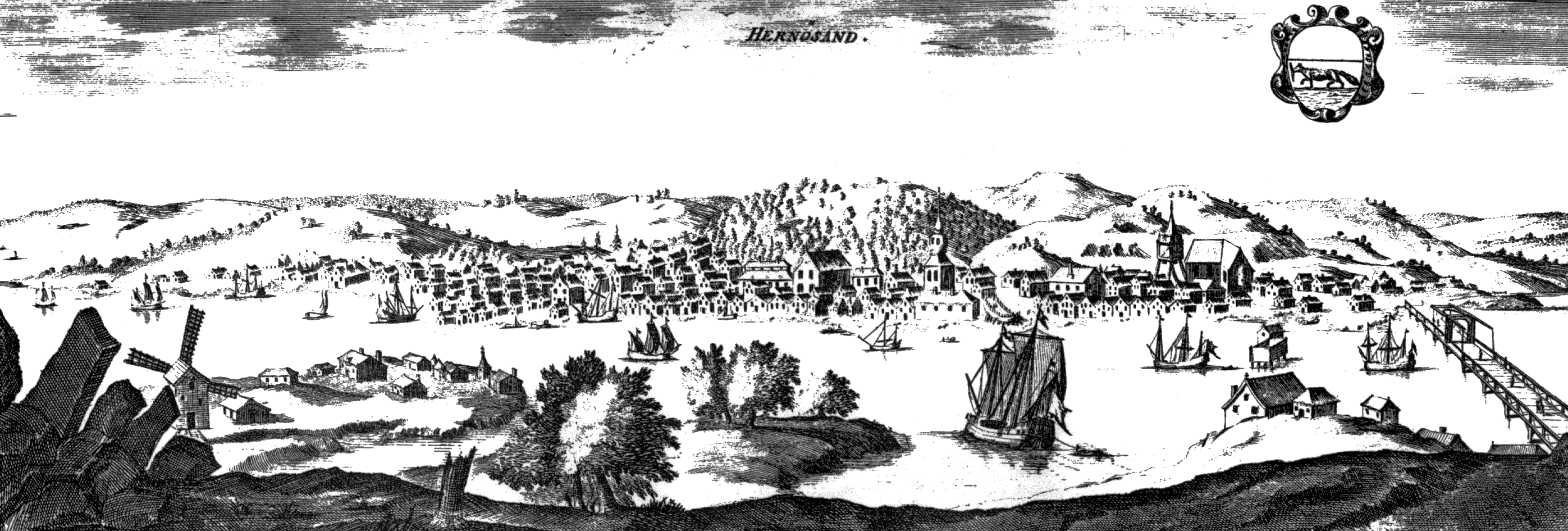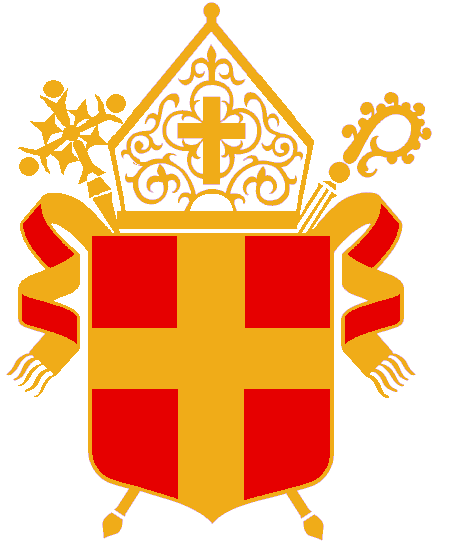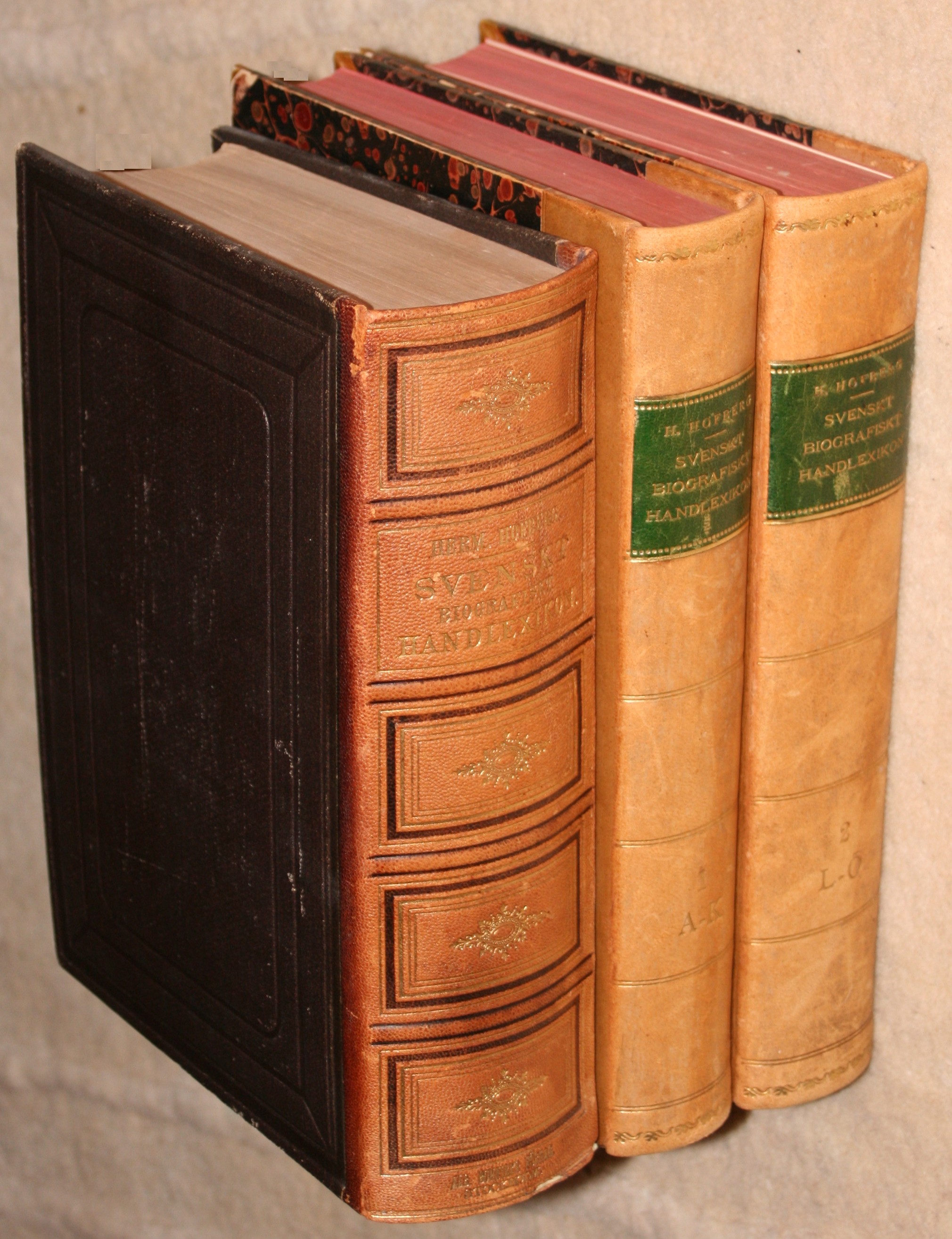|
Mathias Steuchius
Mathias Steuchius (; 26 October 1644 – 2 August 1730) was Bishop of the Diocese of Lund, 1694 to 1714 and Archbishop of Uppsala in the Swedish Church from 1714 to his death. Steuchius was born in Fogdö, and grew up in Härnösand in northern Sweden, where his father was superintendent. He was ordained a priest in 1672 and participated in the Riksdag of the Estates in 1672 and 1675 In 1676 he became professor of logic and metaphysics at the Uppsala University. He married in 1680. In 1683 his father died, and Steuchius superseded him. He worked as superintendent for twelve years, and put much effort into converting the Sami people. In 1693 he was made doctor of theology in Uppsala, and in 1694 promoted to professor. But by June 1694 he was summoned to Lund, to be appointed Bishop of Lund. At the death of Haquin Spegel, Steuchius was elected new archbishop in 1714. He worked in Uppsala until his death in 1730. Steuchius was known as a devoted and righteous man by his way of ... [...More Info...] [...Related Items...] OR: [Wikipedia] [Google] [Baidu] |
Archbishop Of Uppsala
The Archbishop of Uppsala (spelled Upsala until the early 20th century) has been the primate (bishop), primate of Sweden in an unbroken succession since 1164, first during the Roman Catholic Church, Catholic era, and from the 1530s and onward under the Lutheran church. Historical overview There have been bishops in Uppsala from the time of Swedish King Ingold I, Ingold the Elder in the 11th century. They were governed by the archbishop of Hamburg-Bremen until Uppsala was made an archbishopric in 1164. The archbishop in Lund (which at that time belonged to Denmark) was declared primate (bishop), primate of Sweden, meaning it was his right to select and ordain the Uppsala archbishop by handing him the pallium. To gain independence, Folke Johansson Ängel in 1274 went to Rome and was ordained directly by the pope. This practice was increasing, so that no Uppsala archbishop was in Lund after Olov Björnsson, in 1318. In 1457, the archbishop Jöns Bengtsson (Oxenstierna) was allow ... [...More Info...] [...Related Items...] OR: [Wikipedia] [Google] [Baidu] |
Härnösand
Härnösand () is a locality and the seat of Härnösand Municipality in Västernorrland County, Sweden with 17,556 inhabitants in 2010. It is called "the gate to the High Coast" because of the world heritage landscape just a few miles north of Härnösand. Härnösand is the seat of the Diocese of Härnösand. History On 10 December 1885, Härnösand became the first town in Sweden with electric street lighting, following the Gådeå power station being taken into use. Education Härnösand is the seat of The National Agency for Special Needs Education and Schools (''Specialpedagogiska skolmyndigheten''). The Swedish International Development Cooperation Agency (Sida) operates its training programme Sida Partnership Forum in Härnösand. Industry One of the biggest employers in Härnösand is the cable-TV and Cable internet service provider Com Hem. Sports The women's team of the bandy club Härnösands AIK plays in the highest division and the men's team has don ... [...More Info...] [...Related Items...] OR: [Wikipedia] [Google] [Baidu] |
18th-century Lutheran Archbishops
The 18th century lasted from January 1, 1701 ( MDCCI) to December 31, 1800 ( MDCCC). During the 18th century, elements of Enlightenment thinking culminated in the American, French, and Haitian Revolutions. During the century, slave trading and human trafficking expanded across the shores of the Atlantic, while declining in Russia, China, and Korea. Revolutions began to challenge the legitimacy of monarchical and aristocratic power structures, including the structures and beliefs that supported slavery. The Industrial Revolution began during mid-century, leading to radical changes in human society and the environment. Western historians have occasionally defined the 18th century otherwise for the purposes of their work. For example, the "short" 18th century may be defined as 1715–1789, denoting the period of time between the death of Louis XIV of France and the start of the French Revolution, with an emphasis on directly interconnected events. To historians who expan ... [...More Info...] [...Related Items...] OR: [Wikipedia] [Google] [Baidu] |
17th-century Lutheran Bishops
The 17th century lasted from January 1, 1601 ( MDCI), to December 31, 1700 ( MDCC). It falls into the early modern period of Europe and in that continent (whose impact on the world was increasing) was characterized by the Baroque cultural movement, the latter part of the Spanish Golden Age, the Dutch Golden Age, the French ''Grand Siècle'' dominated by Louis XIV, the Scientific Revolution, the world's first public company and megacorporation known as the Dutch East India Company, and according to some historians, the General Crisis. From the mid-17th century, European politics were increasingly dominated by the Kingdom of France of Louis XIV, where royal power was solidified domestically in the civil war of the Fronde. The semi-feudal territorial French nobility was weakened and subjugated to the power of an absolute monarchy through the reinvention of the Palace of Versailles from a hunting lodge to a gilded prison, in which a greatly expanded royal court could be more easily k ... [...More Info...] [...Related Items...] OR: [Wikipedia] [Google] [Baidu] |
Lutheran Bishops Of Lund
Lutheranism is one of the largest branches of Protestantism, identifying primarily with the theology of Martin Luther, the 16th-century German monk and reformer whose efforts to reform the theology and practice of the Catholic Church launched the Protestant Reformation. The reaction of the government and church authorities to the international spread of his writings, beginning with the ''Ninety-five Theses'', divided Western Christianity. During the Reformation, Lutheranism became the state religion of numerous states of northern Europe, especially in northern Germany, Scandinavia and the then-Livonian Order. Lutheran clergy became civil servants and the Lutheran churches became part of the state. The split between the Lutherans and the Roman Catholics was made public and clear with the 1521 Edict of Worms: the edicts of the Diet condemned Luther and officially banned citizens of the Holy Roman Empire from defending or propagating his ideas, subjecting advocates of Lutheranism to ... [...More Info...] [...Related Items...] OR: [Wikipedia] [Google] [Baidu] |
Lutheran Archbishops Of Uppsala
Lutheranism is one of the largest branches of Protestantism, identifying primarily with the theology of Martin Luther, the 16th-century German monk and reformer whose efforts to reform the theology and practice of the Catholic Church launched the Protestant Reformation. The reaction of the government and church authorities to the international spread of his writings, beginning with the ''Ninety-five Theses'', divided Western Christianity. During the Reformation, Lutheranism became the state religion of numerous states of northern Europe, especially in northern Germany, Scandinavia and the then-Livonian Order. Lutheran clergy became civil servants and the Lutheran churches became part of the state. The split between the Lutherans and the Roman Catholics was made public and clear with the 1521 Edict of Worms: the edicts of the Diet condemned Luther and officially banned citizens of the Holy Roman Empire from defending or propagating his ideas, subjecting advocates of Lutheranism ... [...More Info...] [...Related Items...] OR: [Wikipedia] [Google] [Baidu] |
People From Norrtälje Municipality
A person ( : people) is a being that has certain capacities or attributes such as reason, morality, consciousness or self-consciousness, and being a part of a culturally established form of social relations such as kinship, ownership of property, or legal responsibility. The defining features of personhood and, consequently, what makes a person count as a person, differ widely among cultures and contexts. In addition to the question of personhood, of what makes a being count as a person to begin with, there are further questions about personal identity and self: both about what makes any particular person that particular person instead of another, and about what makes a person at one time the same person as they were or will be at another time despite any intervening changes. The plural form "people" is often used to refer to an entire nation or ethnic group (as in "a people"), and this was the original meaning of the word; it subsequently acquired its use as a plural form of per ... [...More Info...] [...Related Items...] OR: [Wikipedia] [Google] [Baidu] |
1730 Deaths
Year 173 ( CLXXIII) was a common year starting on Thursday (link will display the full calendar) of the Julian calendar. At the time, it was known as the Year of the Consulship of Severus and Pompeianus (or, less frequently, year 926 '' Ab urbe condita''). The denomination 173 for this year has been used since the early medieval period, when the Anno Domini calendar era became the prevalent method in Europe for naming years. Events By place Roman Empire * Gnaeus Claudius Severus and Tiberius Claudius Pompeianus become Roman Consuls. * Given control of the Eastern Empire, Avidius Cassius, the governor of Syria, crushes an insurrection of shepherds known as the Boukoloi. Births * Maximinus Thrax ("the Thracian"), Roman emperor (d. 238) * Mi Heng, Chinese writer and musician (d. 198) Deaths * Donatus of Muenstereifel, Roman soldier and martyr (b. AD 140 Year 140 ( CXL) was a leap year starting on Thursday (link will display the full calendar) of the Julian ... [...More Info...] [...Related Items...] OR: [Wikipedia] [Google] [Baidu] |
1644 Births
It is one of eight years (CE) to contain each Roman numeral once (1000(M)+500(D)+100(C)+(-10(X)+50(L))+(-1(I)+5(V)) = 1644). Events January–March * January 22 – The Royalist Oxford Parliament is first assembled by King Charles I of England. * January 26 – First English Civil War – Battle of Nantwich: The Parliamentarians defeat the Royalists, allowing them to end the 6-week Siege of Nantwich in Cheshire, England. * January 30 – **Dutch explorer Abel Tasman departs from Batavia in the Dutch East Indies (now Jakarta in Indonesia) on his second major expedition for the Dutch East India Company, to maps the north coast of Australia. Tasman commands three ships, ''Limmen'', ''Zeemeeuw'' and ''Braek'', and returns to Batavia on August 4 with no major finds. ** Battle of OchmatĂłw: Polish–Lithuanian Commonwealth forces under hetman StanisĹ‚aw Koniecpolski secure a substantial victory over the horde of Crimean Tatars, under Tugay B ... [...More Info...] [...Related Items...] OR: [Wikipedia] [Google] [Baidu] |
List Of Archbishops Of Uppsala
This article lists the archbishops of Uppsala. Before the Reformation * 1164–1185: Stefan * 1185–1187: Johannes * 1187–1197: Petrus * 1198–1206: Olov Lambatunga * 1207–1219: Valerius * 1219 (1224)–1234: Olov Basatömer * 1236–1255: Jarler * 1255–1267: Lars * 1274–1277: Folke Johansson Ängel * 1278–1281: Jakob Israelsson * 1281–1284: Johan Odulfsson (not ordained) * 1285–1289: Magnus Bosson * 1289–1291: Johan * 1292–1305: Nils Allesson * 1308–1314: Nils Kettilsson * 1315–1332: Olov Björnsson * 1332–1341: Petrus Filipsson * 1341–1351: Heming Nilsson * 1351–1366: Petrus Torkilsson * 1366–1383: Birger Gregersson * 1383–1408: Henrik Karlsson * 1408–1421: Jöns Gerekesson (''Johannes Gerechini'') * 1421–1432: Johan Håkansson * 1432–1438: Olov Larsson (''Olaus Laurentii'') * 1433–1434: Arnold of Bergen (not ordained) * 1438–1448: Nicolaus Ragvaldi * 1448–1467: Jöns Bengtsson Oxenstierna * 1468–1469: Tord Pedersson (Bon ... [...More Info...] [...Related Items...] OR: [Wikipedia] [Google] [Baidu] |
Svenskt Biografiskt Handlexikon
''Svenskt biografiskt handlexikon'' () is a compact Swedish dictionary of biography first published in 1873–1876 by the physician and antiquarian Herman Hofberg (1823–1883). The second, updated edition was published in 1906, under the editorship of Frithiof Heurlin, Viktor Millqvist, and Olof Rubenson. The second edition, two volumes of all together 1,445 pages, contains 4,419 articles on families and individuals, "renowned Swedish men and women from the reformation until the present times", and more than 3,000 miniature portraits. See also * Svenskt biografiskt lexikon External links *Svenskt biografiskt handlexikon', digitized facsimile, at the Project Runeberg Project Runeberg ( sv, Projekt Runeberg) is a digital cultural archive initiative that publishes free electronic versions of books significant to the culture and history of the Nordic countries. Patterned after Project Gutenberg, it was founded ... website 1873 non-fiction books 1874 non-fiction books 1875 ... [...More Info...] [...Related Items...] OR: [Wikipedia] [Google] [Baidu] |
Sami People
Acronyms * SAMI, ''Synchronized Accessible Media Interchange'', a closed-captioning format developed by Microsoft * Saudi Arabian Military Industries, a government-owned defence company * South African Malaria Initiative, a virtual expertise network of malaria researchers People * Samee, also spelled Sami, a male given name * Sami (name), including lists of people with the given name or surname * Sámi people, indigenous people of the Scandinavian Peninsula, the Kola Peninsula, Karelia and Finland ** Sámi cuisine ** Sámi languages, of the Sami people ** Sámi shamanism, a faith of the Sami people Places * Sápmi, a cultural region in Northern Europe * Sami (ancient city), in Elis, Greece * Sami Bay, east of Sami, Cephalonia * Sami District, Gambia * Sami, Burkina Faso, a district of the Banwa Province * Sami, Cephalonia, a municipality in Greece * Sami, Gujarat, a town in Patan district of Gujarat, India * Sami, Paletwa, a town in Chin State, Myanmar * Sämi, a village in Là ... [...More Info...] [...Related Items...] OR: [Wikipedia] [Google] [Baidu] |



.jpg)
_1938.jpg)


